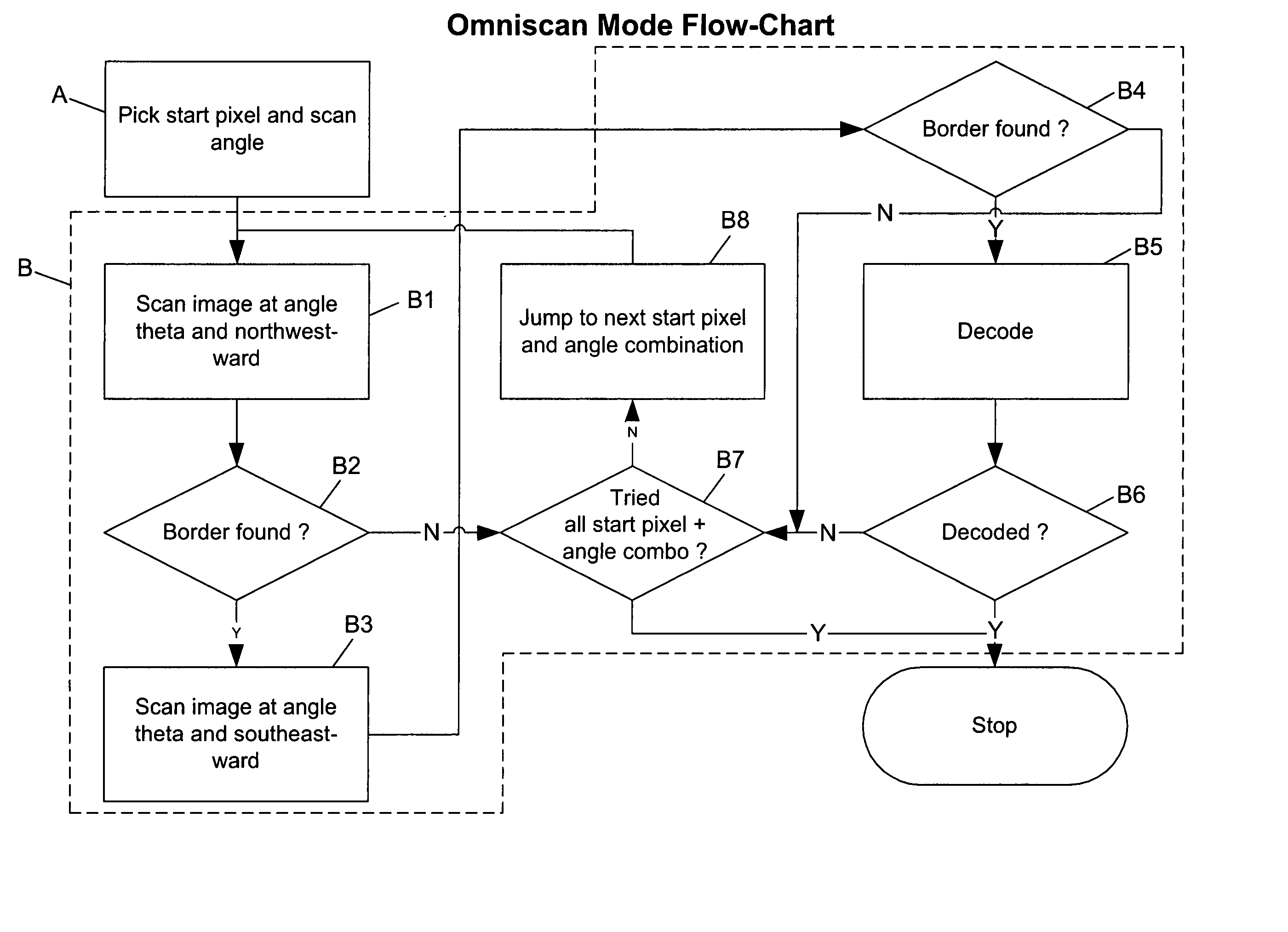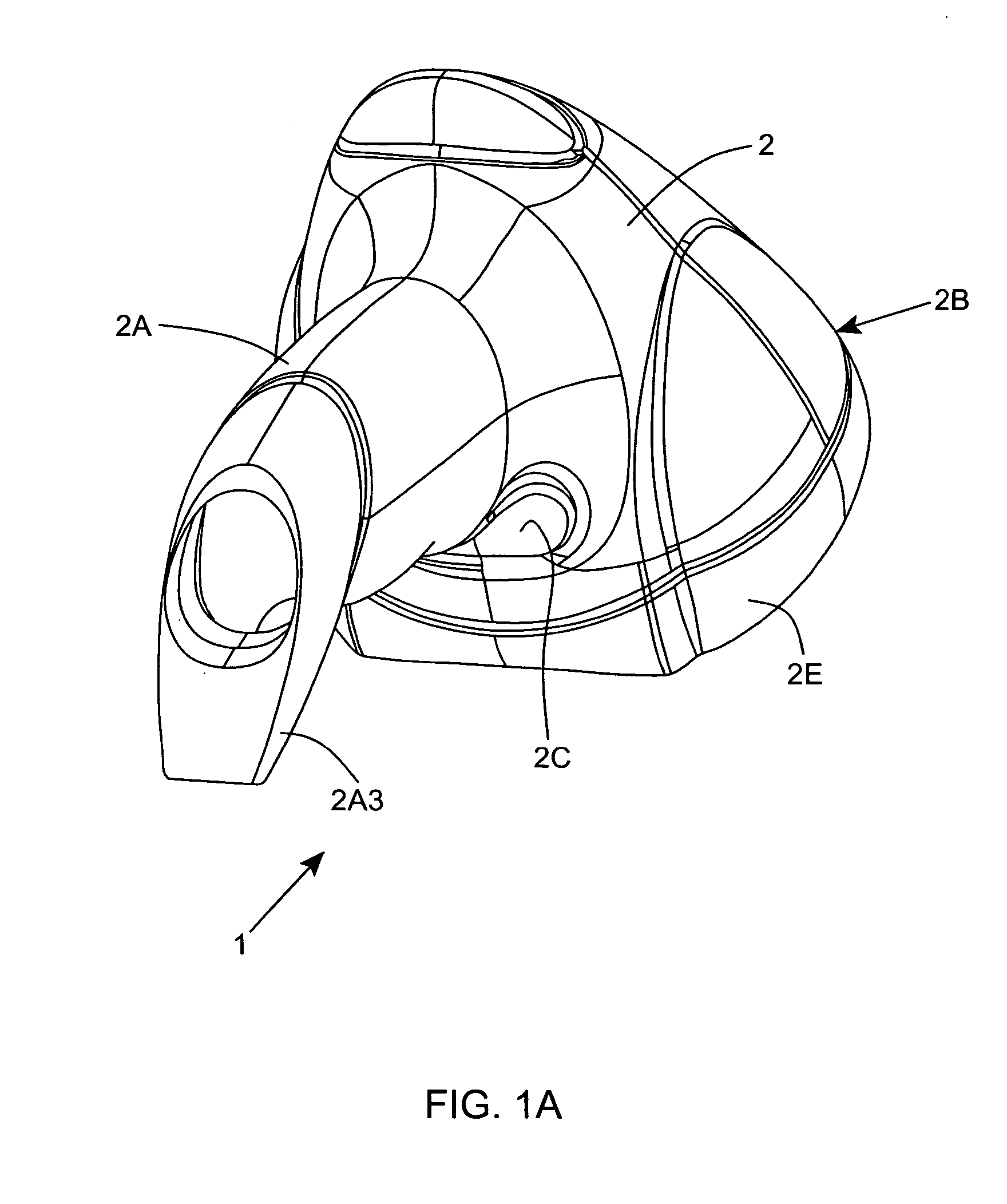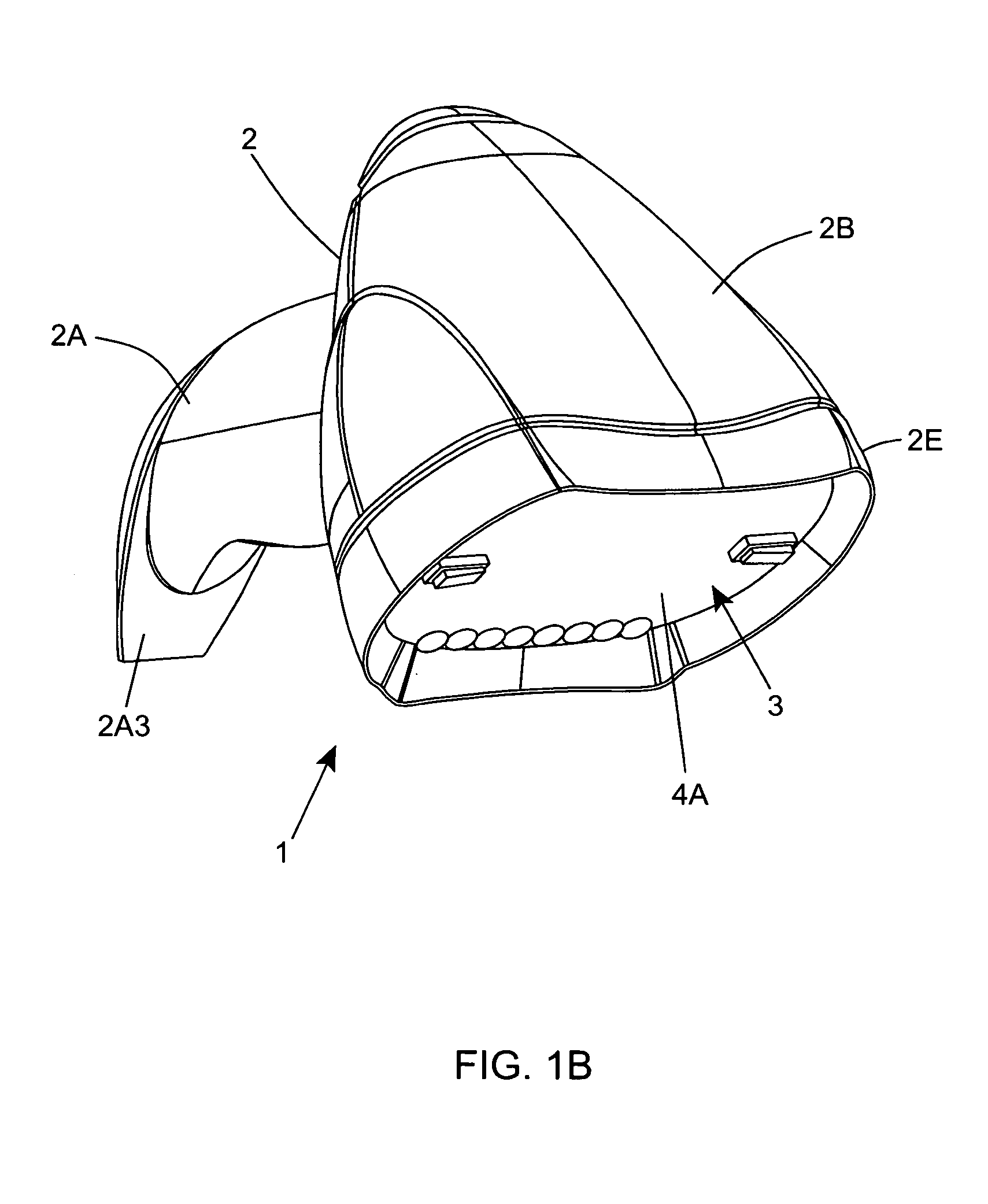Method of and system for determining the lower limit of decoding resolution in an imaging-based bar code symbol reader
a bar code symbol and scanner technology, applied in the field of hand-supportable and portable area-type digital bar code readers, can solve the problems of limiting the capabilities of such systems, code reading systems having limited their performance, and prior art bar code symbol readers suffering from a number of additional shortcomings and drawbacks
- Summary
- Abstract
- Description
- Claims
- Application Information
AI Technical Summary
Benefits of technology
Problems solved by technology
Method used
Image
Examples
Embodiment Construction
[0211] Referring to the figures in the accompanying Drawings, the various illustrative embodiments of the hand-supportable imaging-based bar code symbol reading system of the present invention will be described in great detail, wherein like elements will be indicated using like reference numerals.
Hand-Supportable Digital Imaging-Based Bar Code Reading Device of the First Illustrative Embodiment of the Present Invention
[0212] Referring to FIGS. 1A through 1K, the hand-supportable Digital Imaging-Based Bar Code Symbol Reading Device of the first illustrative embodiment of the present invention 1 is shown in detail comprising a hand-supportable housing 2 having a handle portion 2A and a head portion 2B that is provided with a light transmission window 3 with a high-pass (red-wavelength reflecting) optical filter element 4A having light transmission characteristics set forth in FIG. 6A2, in the illustrative embodiment. As will be described in greater detail hereinafter, high-pass opt...
PUM
 Login to View More
Login to View More Abstract
Description
Claims
Application Information
 Login to View More
Login to View More - R&D
- Intellectual Property
- Life Sciences
- Materials
- Tech Scout
- Unparalleled Data Quality
- Higher Quality Content
- 60% Fewer Hallucinations
Browse by: Latest US Patents, China's latest patents, Technical Efficacy Thesaurus, Application Domain, Technology Topic, Popular Technical Reports.
© 2025 PatSnap. All rights reserved.Legal|Privacy policy|Modern Slavery Act Transparency Statement|Sitemap|About US| Contact US: help@patsnap.com



